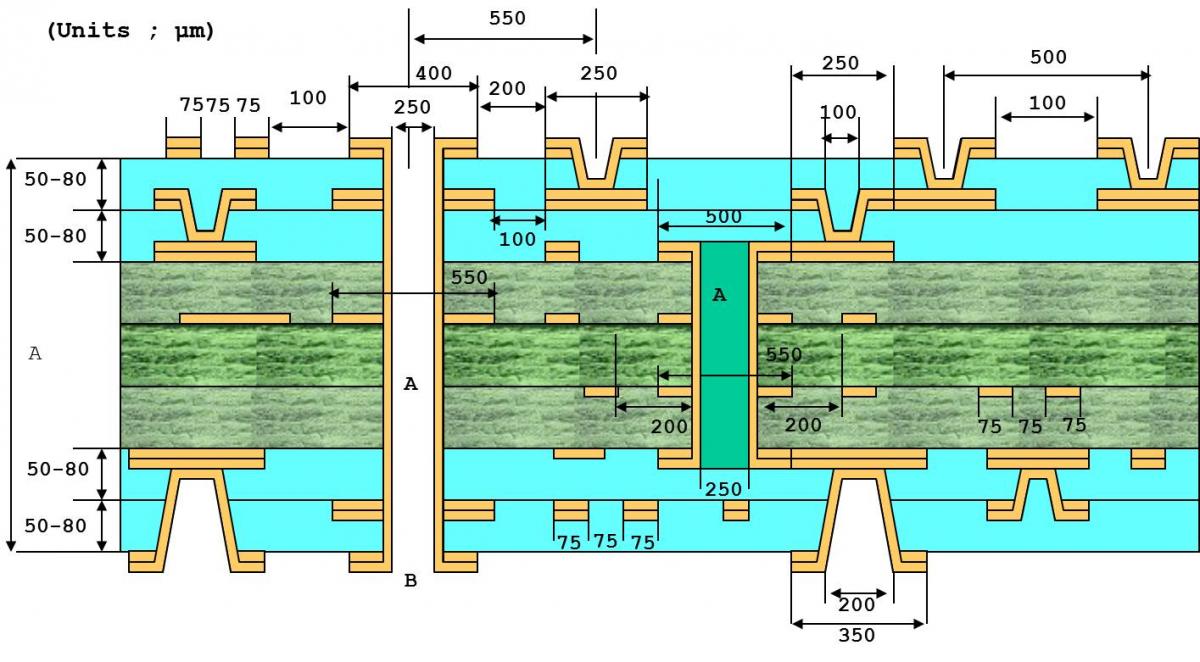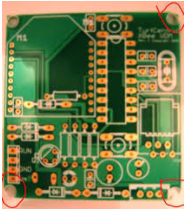Abstract
A few decades ago, PCBs were drilled using simple drills. Typically, the operator had to move panels to the relevant Y and X coordinates and pull the lever to enable the drilling of the hole. The process was repeated several times until the required number of holes were drilled. Today, things have changed and the fact that one PCB could have over 1000hles drilled means that it is no longer feasible to use this traditional method to drill holes in a PCB. Standard PCB drill sizes have made the process fairly easier. They make use of automated drilling machines fitted with standard PCB drills that make the required number of holes.

Content
1.Introduction
2.Standard PCB drill hole sizes
3.PCB standard drill sizes mm
4.Standard metric PCB drill sizes
5.Conclusion
1.Introduction
Thus, when buying PCBs, it is critical to only buy those in which Standard PCB drill sizes have been used. If you will be drilling the holes by yourself, then it is necessary that you buy standard drill sizes PCB machines. If you are supplying the boards to clients, they may require that you meet certain standards and specifications. The trends are that most houses ask for finished standard holes sizes that allow them to make adjustments depending on their needs.
Non-professionals find it easier to work with predetermined standard holes sizes so working with Standard PCB drill sizes may give you an upper hand. The machines that drill the holes vary in size and their designers consider the size of the holes required and the use to which the PCB is to be put to.

Drill size
When planning to purchase drills, considering the aspect ratio between the boards’ thickness and the size of the drill to be used is mandatory. It ensures that the aspect ratio is put into consideration and it is necessary that the PCB should match the capability of Standard PCB drill sizes to be used. Luckily, most of the commonly used material come with their corresponding holes sizes, which makes your work easier. For instance, smaller holes that are 0.006’’ requires drills that are 0.062’’ while those that are smaller 0.012’’ may require drills that are less than 0.125’’
If the hole to be drilled is smaller than 0.001’’, then lesser technology may be used to drill the hole. After drilling, the holes may then have to be plated and used in circuits with tight designs but which have traces. Creating vias may require that you drill holes in the PCB and have them plated in stacks before they are laminated together.
2.Standard PCB drill hole sizes
Drill Holes
When it comes to obtaining the standard PCB drill holes sizes, it may be necessary that you follow certain rules to limit wastage. For instance, when the component is Xmm, you should drill a hole that is X+ 0.3mm. If the component is 0.4mm, then drilling a hole that is about 0.7- 0.8 mm may be necessary. If you make the whole bigger, you are likely to end up with more waste when you start soldering. On the other hand, when you make them smaller it will be difficult for you to stuff the components. Also, notice that may be difficult to have the PCB plated together.
Decreasing the drill size comes with a host of other problems that include stuffing. Therefore designing boards that allow you to use standard PCB drill hole sizes is necessary. Also, there is a panel limit of drill holes that are accepted in DSS and SSS. For SSS it is recommended that you observe a limit of 500 holes while the maximum of 2000 hole must be observed for DSS panels. It is possible that you may choose to use inch sizes. However, it is recommended that you use metric units such as 0.1mm, 5.0mm and so forth. Notice that it is important that you also do your best to minimize overlapping drill holes.
3.PCB standard drill sizes mm
If you do not know the correct size of the holes to drill in your PCB, the PCB standard drill sizes mm chart could provide you with some reference materials. The chart provides a list of size drill measurement system that includes metric, fractional, letter and wire gauge numbers that you should consider using. It makes the hole making the process simpler.
PCB standard drill sizes mm are used to make standard holes into a workpiece. Other machines may be used to cut and remove unwanted materials but may require equipment such as milling machines. It may also require specialized machines such as tapping machines and drill presses. You may perform the hole making process as a secondary machine making process. It could also be done so as to add features that were considered costly or to help improve the tolerance of the PCB. The hole is cut from an existing workpiece board and may be characterized by different features depending on the application it is to be put to. In PCB standard drill sizes, the following aspects are imported:
Tolerance – How precise you are in cutting determines the tolerance of the PCB. Using sharp equipment and appropriate hole making tools may increase the tolerance.
Depth- the cutting tool used determines the depth of the hole. It is possible to have a blind or a through hole.
4.Standard metric PCB drill sizes
Choosing the right PCB drill sizes determines the kind of work you will finally end up with. The drill chart provides a list of standard sizes that includes metric, wire gauge number and letters to choose from. The diameters are shown in both metric Units and English. The fractional sizes are normally listed in inches and the metrics are all in millimeters to make your work easier.
5.Conclusion
Having looked at the standard PCB drill sizes and how you can drill holes in your PCBS using the right tools, you should be able to drill holes in your PCBS without a problem. All you have to do is to understand the needs the PCB will be put to and purchase the right drill sizes that can help to drill standard holes sizes.
Comments
Post a Comment